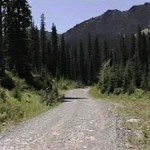Saguaro – Icon of the Southwest
No doubt about it, the Saguaro (pronounced “suh-WAH-ruh”) is an impressive plant. The Saguaro is the largest cactus in USA and can weigh more than two elephants. By middle age, the Saguaro will tower above all other desert plants. It is an important source of food and shelter to desert animals.
Saguaro grow in the Sonoran desert. They are found naturally in Central and Southern Arizona. That range is around Tucson, AZ and often on southwest facing hillsides east of Gila Bend, AZ down into Mexico on lower rocky slopes. If seen elsewhere, humans planted and nurtured the Saguaro.
Most cacti are slow growers but the Saguaro is one of the slowest. A seed, established most often under another desert plant for protection from the scorching desert sun, will grow 4 inches in 10 years and two feet in 25 years.
 By the time the Saguaro is 50 years it may reach a height of 10 feet. After 150 years the cactus will achieve a maximum height of 50 feet. It grows only during “monsoon” – July, August, and September. The Saguaro starts out looking like a prickly baseball cap laying on the ground. It grows into a tall bowling pin shape plant until it takes on the classic saguaro shape. The Saguaro’s classic arms-reaching-skyward appearance starts at around 65 yrs.
By the time the Saguaro is 50 years it may reach a height of 10 feet. After 150 years the cactus will achieve a maximum height of 50 feet. It grows only during “monsoon” – July, August, and September. The Saguaro starts out looking like a prickly baseball cap laying on the ground. It grows into a tall bowling pin shape plant until it takes on the classic saguaro shape. The Saguaro’s classic arms-reaching-skyward appearance starts at around 65 yrs.
The Saguaro is important to many desert animals. Its cream white, four to five inches long, chalice-shaped flowers are concentrated at top of its branches or “arms.” They bloom only at night in May or early June and will close the next day. The bloom’s nectar attracts birds, bees, and bats who pollinate the flower. Later a fruit develops and will ripen in 37 days. This fruit is a bright-red tube containing upwards of two thousand black seeds. Those seeds are so small it takes 380 to weigh as much as an aspirin. The fruit is edible and used by humans to make candies, syrups, and wine. When the fruit is on the ground, Curved-bill thrasher, Horned lizards, javelin (hav-a-LEEN-a), and coyotes can be seen munching the ripe fruit.
 The Saguaro is not just a source of food but also shelter. The Gila woodpecker carves its nest in the cactus but uses it for only one season. (An old Gila woodpecker nest is called “Saguaro Boot” and was used by Papago, resident Native People, as food containers.) The Elf owl, which as an adult is only 5 inches long, nests in abandon Gila woodpeckers’ nest while White-wing dove builds it’s nest on a Saguaro’s branch. Harris’ hawk, a “social hunter,” uses the cactus as nesting site and lockout for hunting.
The Saguaro is not just a source of food but also shelter. The Gila woodpecker carves its nest in the cactus but uses it for only one season. (An old Gila woodpecker nest is called “Saguaro Boot” and was used by Papago, resident Native People, as food containers.) The Elf owl, which as an adult is only 5 inches long, nests in abandon Gila woodpeckers’ nest while White-wing dove builds it’s nest on a Saguaro’s branch. Harris’ hawk, a “social hunter,” uses the cactus as nesting site and lockout for hunting.
Surviving the Sonora desert climate has required the Saguaro to develop some interesting adaptions. The Saguaro’s sharp spines protect it and reduces loss of moisture to about 8 oz per day. The accordion-like pleated exterior of the Saguaro expands to store extra water and folds up when moisture becomes scare. The internal structure of the Saguaro is focused on storing life-giving moisture so its “skeleton” is made up of long, straight lightweight wooden rods, used by humans for roofs, fences, and fuel. Moisture storing pulp surrounds the rods in a healthy Saguaro.
A Saguaro cactus is an impressive sight to travelers of the southwest. Visitors marvel at the magnificent Saguaro cactus for its large, comical shapes and regal appearance. The Saguaro is an impressive cacti and an iconic image of the Southwest.










